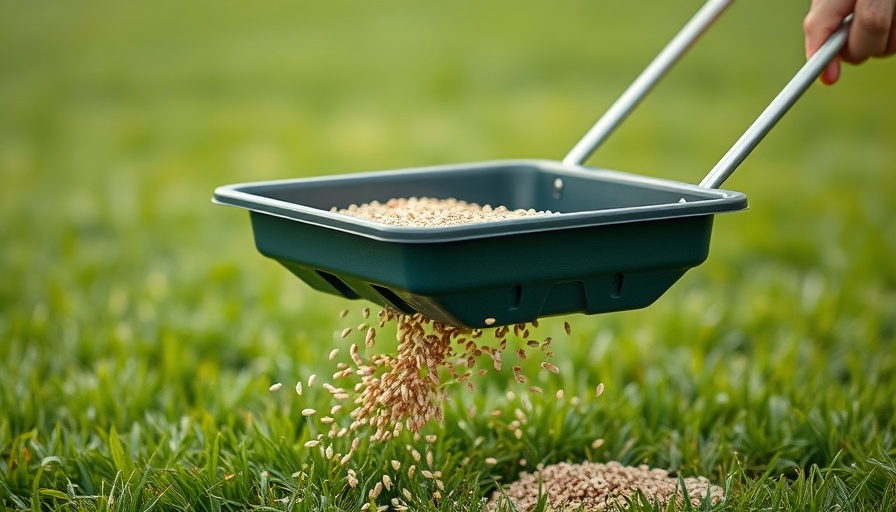
Overseeding Your Lawn: Breathing New Life into Your Outdoor Space
This year, as homeowners look to enhance their curb appeal and cultivate healthy outdoor spaces, many are turning to a simple yet effective solution: overseeding their lawns. This process revitalizes thin or patchy grass areas by spreading fresh seeds over an existing lawn, leading to a thicker and healthier turf.
Understanding Overseeding: What You Need to Know
Overseeding a lawn is like giving it a much-needed breath of fresh air; it allows existing grasses to blend with new seed varieties, filling in bare spots and enhancing overall thickness. However, before jumping into this gardening project, it’s crucial to understand the underlying causes of a sparse lawn. Common issues might include poor soil drainage, high foot traffic, or even nutrient deficiencies. Identifying these will ensure your efforts aren’t just a temporary fix.
Timing Is Everything: When Should You Overseed?
While timing your overseeding can greatly influence success, it varies based on your location and climate. For cool-season grasses like Kentucky bluegrass, the ideal period to overseed is late summer or early fall when temperatures promote healthy growth. In contrast, warmer climates may benefit most from overseeding during the mild spring months. Keeping an eye on local weather patterns can help ensure you're not sowing too close to frost dates or extreme heat.
Preparation: A Crucial Step in Overseeding
The next step is to prepare your existing lawn. Mowing your grass short to around 1.5 to 2 inches is vital. Shorter grass results in better seed-to-soil contact, increasing the likelihood of germination. Additionally, taking the time to rake away debris and creating a bit of disturbance in the surface can help the new seeds settle in.
Choosing the Right Seed: A Key to Success
When selecting grass seed, consider the specific needs of your lawn. Different grass types thrive under various conditions, such as sunlight exposure and soil moisture. Lawn care experts often recommend mixing different grass seeds to enhance resilience against pests, heat stress, and other common lawn issues.
Watering and TLC: Keeping Your Grass Healthy
After overseeding, the newly sown seeds will require gentle watering. Keep the seeded area moist without over-saturating, ideally watering once a day unless natural rainfall occurs. As the new seeds begin sprouting, normal mowing practices can be resumed but adjusting cutting height helps prevent stress on the young grass.
Benefits of Overseeding: Why You Should Consider It
Beyond just aesthetics, overseeding provides numerous benefits. A well-cared-for lawn not only enhances the visual appeal of your home but also contributes to a healthier environment. It encourages biodiversity, naturally crowding out weeds and diseases. Furthermore, thick, robust grass can tolerate adverse weather conditions better, proving beneficial in areas prone to drought or other challenges.
For homeowners eager to see a transformation in their outdoor spaces, taking the time to learn about overseeding methods ensures not only a greener lawn but a flourishing ecosystem right in your backyard.
If you’re ready to turn your lawn dreams into reality, why not take the plunge this season? Gather your supplies, devote some time to research, and prepare for a gorgeous lawn transformation that will delight your senses and impress your neighbors!
 Add Row
Add Row  Add
Add 




 Add Row
Add Row  Add
Add 

Write A Comment